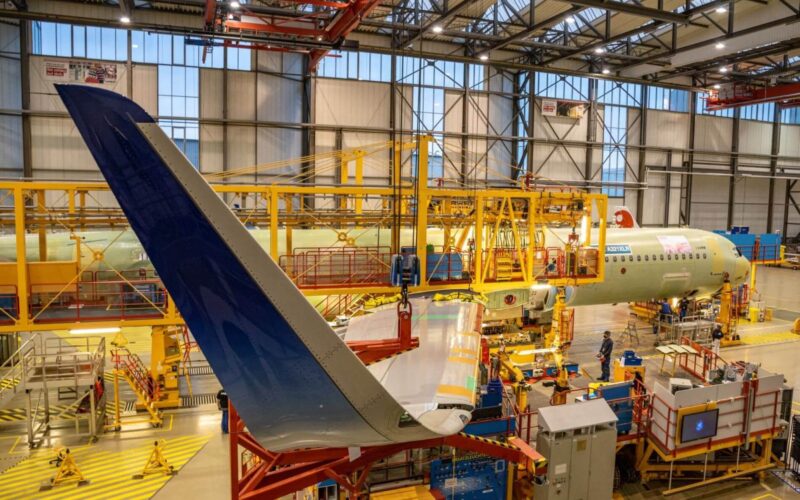Airbus announced that the prototype of the A321XLR, the latest addition to the company’s A320 family, is nearing the end of its assembly process. The aircraft’s airframe has been assembled, and testing is about to commence.
The airplane is being constructed at the company’s final assembly facility in Hamburg.
The fuselage, the empennage and the wings of the prototype have already been riveted together, and most of the internal components, including the fuel tanks, hydraulic systems and cabin systems, have also been installed.
The aircraft has already undergone pressurization testing and cabin systems tests, and is now headed for the next assembly station where final ground tests will take place, Airbus explained in a press release.
The A321XLR prototype still lacks its engines, landing gear retraction mechanisms and some interior furnishings, but these components will be added at the last assembly station.
“In the final assembly of the A321XLR aircraft there is not a big variation compared with the other A321 aircraft. The major differences in the -XLR are seen in the ‘pre-FAL’ [final assembly line – AeroTime], at section assembly level, where the RCT is installed, for example,” said Gerd Weber, head of A320 Family Value Stream Management, in the release.
Weber referred to A321XLR’s Rear-Centre Tank (RCT), a unique feature of the aircraft which, according to Airbus, holds an additional 12,900 liters (approx. 3,408 gallons) of fuel, providing the type with a longer range in comparison to the other aircraft in the family.
Airbus A321XLR is a variant of the A321LR, modified for an even longer range. According to the company, the new aircraft will be able to cover 4,700 nautical miles (over 8,700 kilometers), versus 4,000 nautical miles (7,400 kilometers) of the A321LR.
The airplane was launched in 2019, and has amassed more than 450 orders in the first year alone. When completed, it is poised to become the longest-range narrow-body aircraft and will provide airlines with the capability to use it on intercontinental journeys. So far this has only been reserved for wide-body airliners.
According to the press release, the next step for the prototype includes fitting engines, landing gear retraction mechanisms and door fairings. Then, upon passing quality inspection, the aircraft will be painted and readied for rollout.
Airbus aims to conduct XLR’s maiden flight in 2022, and begin mass production of the aircraft in 2023.

